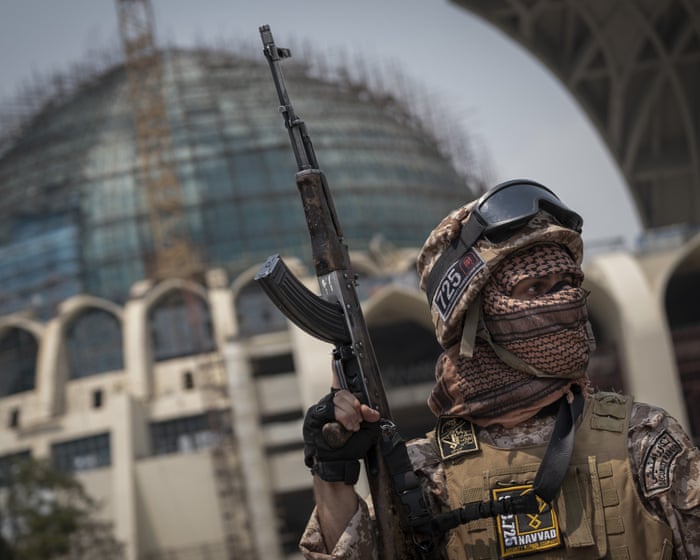Hanging is the most common method of execution in Iran, though stoning and crucifixion remain options for the country’s vengeful theocratic regime. Death by hanging is not always quick—strangulation and suffocation can take several agonizing minutes. According to the UN, over 600 people have been executed in Iran this year alone, giving the country the highest per capita execution rate in the world. Since the U.S. and Israeli attacks in June, an increasing number of those executed have been political dissidents.
Fifty days later, the illegal bombing raids and missile strikes ordered by U.S. President Donald Trump and Israeli Prime Minister Benjamin Netanyahu have achieved nothing positive, despite their claims of world-changing success. Iran’s nuclear facilities were not destroyed, as Trump boasted. Tehran has not stopped enriching uranium. The regime remains in power, despite Netanyahu’s calls for an uprising. If anything, Supreme Leader Ayatollah Ali Khamenei has grown more defiant, launching a fresh crackdown on opponents—hence the surge in executions.
Amnesty International condemned last weekend’s hanging of political prisoners Behrouz Ehsani and Mehdi Hassani, linking their deaths to the U.S.-Israeli attacks. Arrested in 2022, the two men were accused of rebellion and “enmity against God.” After being tortured into signing confessions, they were sentenced in a five-minute trial last year. Amnesty stated that executing them now “highlights the authorities’ ruthless use of the death penalty as a tool of political repression during national crises to crush dissent and spread fear.”
Hundreds have been arrested since June in a regime campaign to root out alleged spies and collaborators—real or imagined. Major intelligence failures, such as Israel’s bombing of a National Security Council meeting that injured President Masoud Pezeshkian, have been blamed not on incompetence but on supposed traitors. Iran’s parliament is now pushing to expand the use of capital punishment, with up to 60 political prisoners facing execution.
This brutal crackdown by Khamenei’s hardliners, the judiciary, and the Revolutionary Guards comes despite a wave of patriotic sentiment following the attacks, which reportedly killed at least 935 people—mostly civilians—and injured over 5,000. Instead of channeling public anger, particularly against Britain and European governments that turned a blind eye, the regime has intensified repression.
The U.S.-Israeli strikes have had other far-reaching consequences. The attacks violated the UN Charter and international law, as noted by the BRICS group of “Global South” nations. They prompted Iran to suspend UN nuclear inspections, deepened divisions between the U.S. and Europe, and ironically increased the likelihood of Iran pursuing nuclear weapons for self-defense.
Khamenei has vowed retaliation if the U.S. attacks again, though Iran insists it neither possesses nor wants nuclear weapons. Despite Israel’s much-touted intelligence, no definitive proof has been presented to the contrary. The decision to strike was based on fear and hatred, not evidence. While the bombings caused significant damage, they failed to change Iran’s stance—Tehran remains committed to uranium enrichment for civilian purposes. Trump’s threats of further attacks only underscore the failure of this strategy.
The reckless aggression has emboldened rogue states like Russia, suggesting they too can attack with impunity. It has reinforced the belief among Iran’s rulers—not just hardliners—that the West cannot be trusted and that closer ties with China are necessary. It has also strengthened hardliners who favor regional proxy wars and covert operations, further isolating Iran on the world stage.
Historically, Iran’s tragedy was—and remains—avoidable.The West’s worst strategic blunders have deepened the divide with Iran. Blind support for the Shah helped trigger the 1979 revolution. The rise of conservative clerics afterward—far from inevitable—combined with lasting U.S. hostility, fueled by memories of the Tehran embassy siege, made the rift permanent. Europe attempted but failed to find a middle ground. In 2018, Trump abandoned the U.S.-backed nuclear deal with Tehran, reimposing sanctions. This final misstep led directly to today’s deadlock. With wiser leadership, things could have been very different.
Amid current tensions, peaceful nuclear cooperation in the Middle East remains possible. All sides in this conflict should heed the words of French philosopher Montesquieu, a critic of tyranny. In his 1721 work Persian Letters, he offered a strikingly prescient warning about weapons of mass destruction. His fictional traveler Usbek writes: “You fear the discovery of even crueler methods of destruction. If such an invention emerged, it would soon be banned by international law. Nations would unanimously agree to bury it.”
In one sense, Usbek was right—nuclear weapons are outlawed. But not all nations comply. If the U.S. and Israel truly want to stop Iran from obtaining nuclear weapons, they should lead by example: reduce and eventually eliminate their own arsenals, halt threats of attack, and support talks on a regional nuclear pact, as proposed by Iran’s former foreign minister, Javad Zarif.
Only then might Iran rejoin the international community. Only then might its distrustful leaders stop executing innocent people.
Simon Tisdall is a Guardian foreign affairs commentator.
Have a view on this article? To share your thoughts (up to 300 words) for possible publication in our letters section, email us by clicking here.




